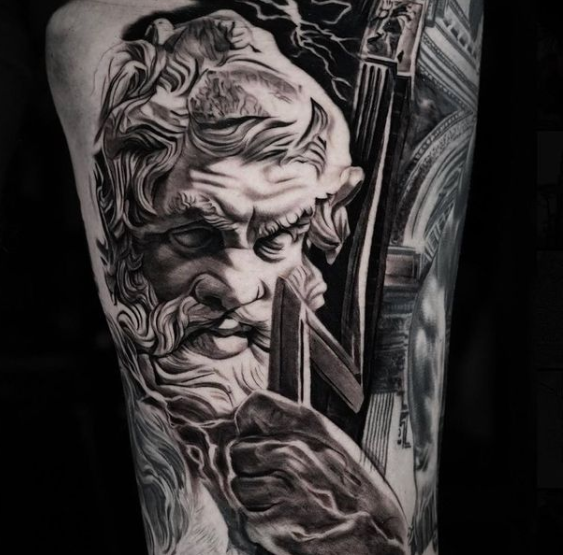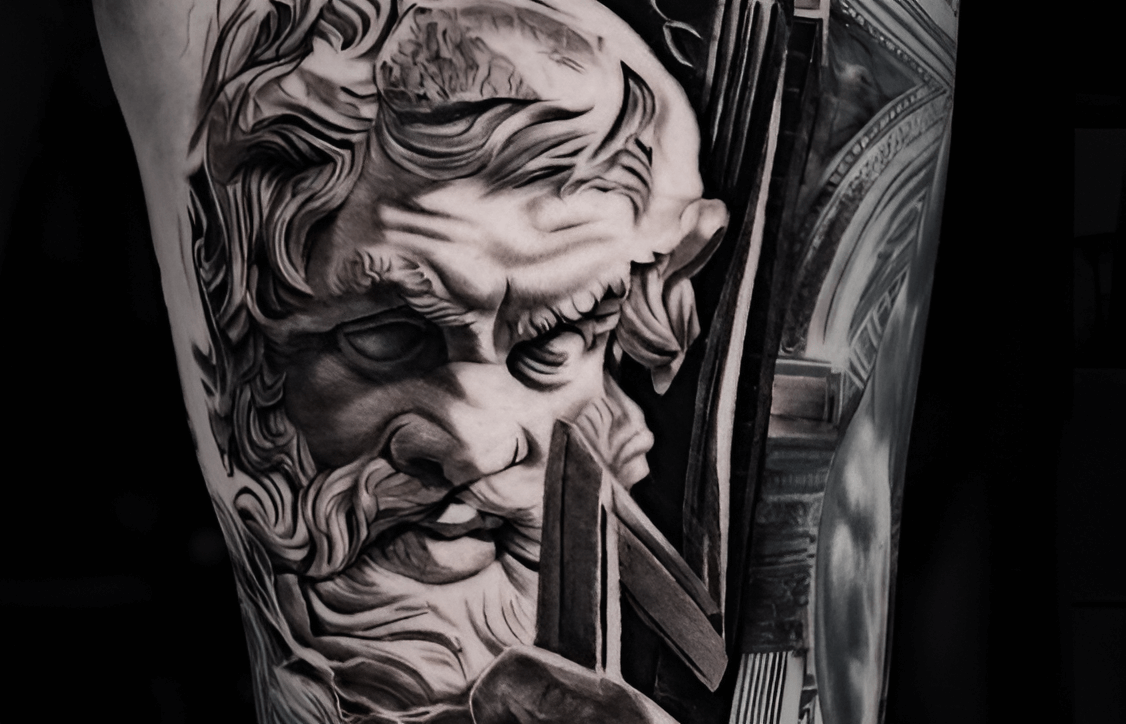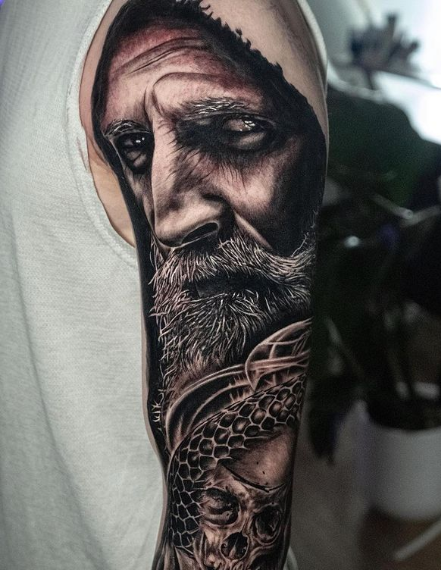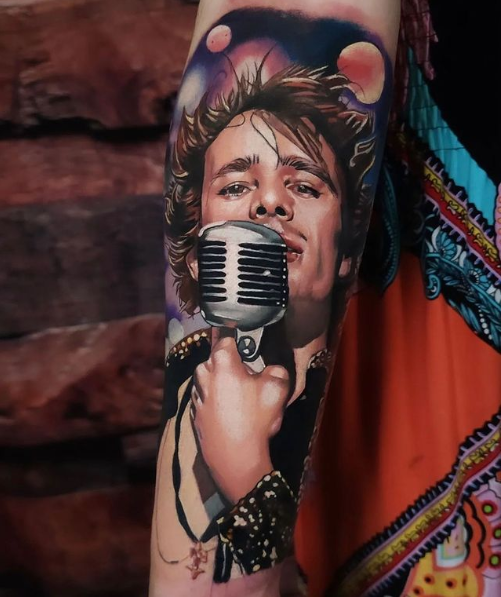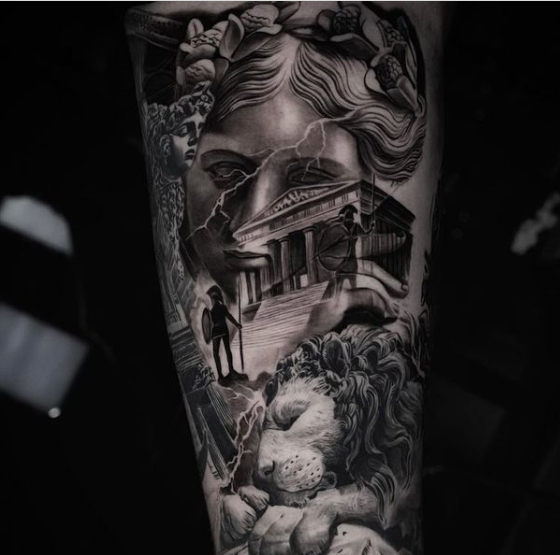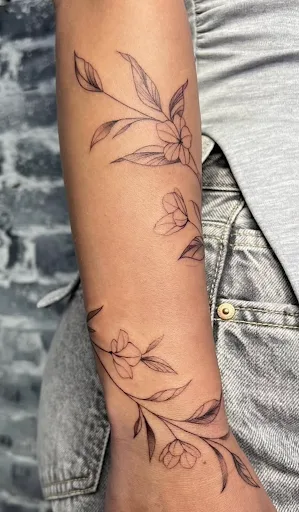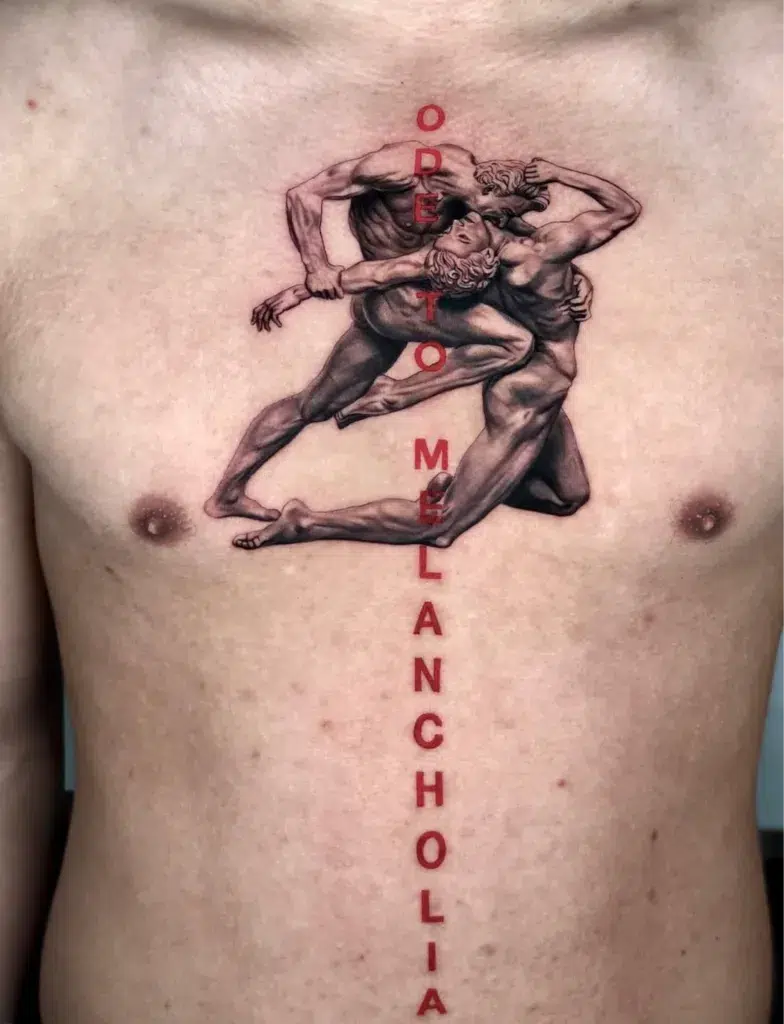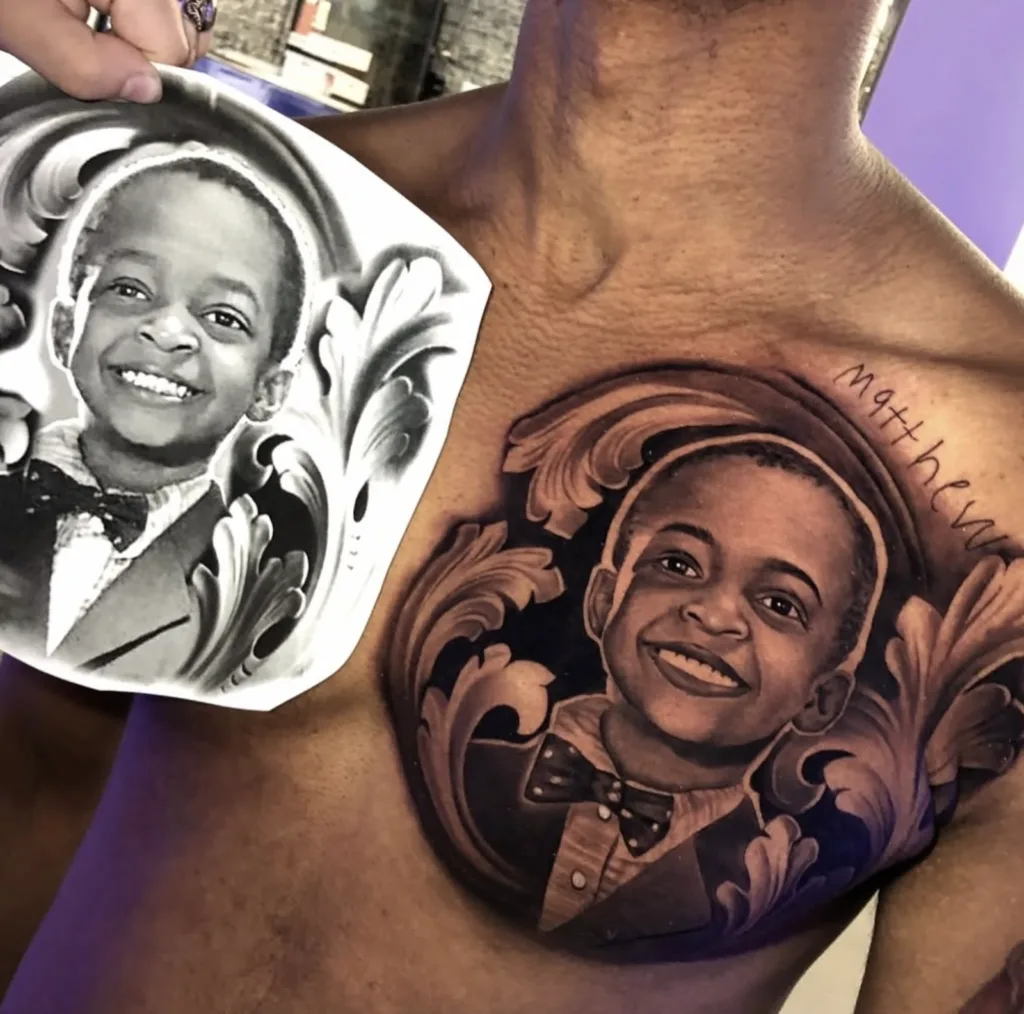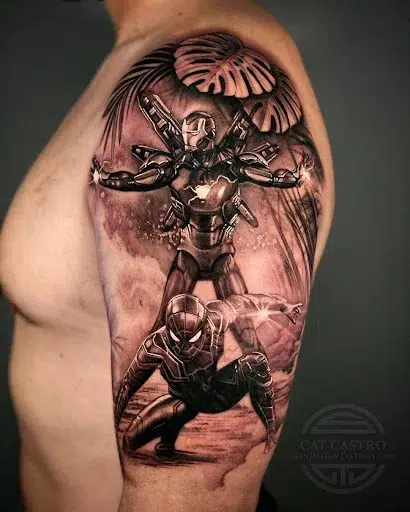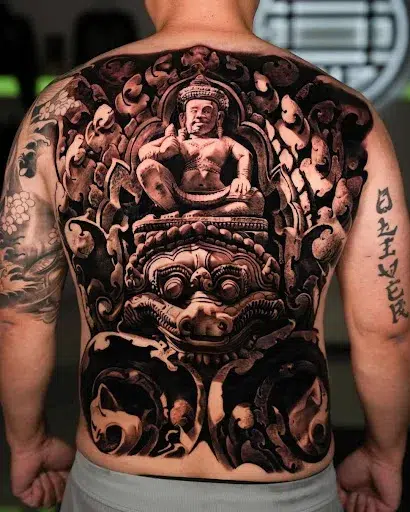Getting a tattoo is more than just choosing a design, getting it inked, and then going back to your daily life. Tattooing is a process that requires dedication, commitment, and planning. It is a permanent piece of art that will last a lifetime, that’s why it’s so important to take the time to learn how to properly take care of your tattoo.
In this article, we will talk about tattoo aftercare instructions, the best tattoo aftercare products to use, and a lot of other crucial information that you need to know before you get a tattoo.
How Long Does It Take for a Tattoo to Heal?
The initial tattoo healing process lasts between 2 weeks and 4 weeks depending on the size of the tattoo and your skin type. You should be able to see the first signs of tattoo healing (superficially) after 4 weeks, but it can take up to 4 months to 6 months before a tattoo is healed completely.
How Long Should I Aftercare My Tattoo?
Tattoo aftercare is typically recommended for the first 30 days after the tattoo is inked. However, as mentioned earlier, it can take up to 4 months to 6 months to complete the tattoo healing process. So, if after 30 days you are still experiencing a low level of pain or discomfort, it is best to continue your aftercare routine until your tattooed skin looks and feels healed.
How Long Should You Leave a Tattoo Wrapped?
Wrapping a new tattoo is a very common tattoo aftercare practice because it helps to protect the tattooed skin from getting infected. For one to two days, you should keep your tattoo wrapped with a cling film to prevent dirt, bacteria, and germs from getting in.
How Long Should You Wait to Shower With a New Tattoo?
There’s a misconception that showering with a new tattoo can cause it to fade. This is a myth. After taking off the film that protects your new tattoo, you can immediately take a shower and start with your tattoo aftercare routine.
Potential Side Effects and Complications of Tattoos
The tattoo healing process takes time, and there are times when you may feel pain or discomfort. This is normal and temporary. However, there are a few potential side effects and complications that you should be aware of, so you can take immediate action in case you notice any of them.
Infection
A fresh tattoo is prone to get infected because of the abrasions caused by the tattoo needle. For the first few days of getting a tattoo, expect to experience some pain and discomfort within the surrounding area of your tattoo. This is pretty normal, but if you notice any signs of infection such as redness, swelling, or severe pain, you should immediately seek medical attention.
Allergic Reaction
An itchy tattoo is a normal part of the tattoo healing process, but it is also one of the most common symptoms of an allergic reaction. Tattoo ink contains a mixture of pigments, dyes, and other chemicals, which is why it can cause an allergic reaction in some people. This can happen anywhere from a few hours to a few days after getting a tattoo. If you notice redness, itchiness, and burning sensation within the surrounding tattoo area, you should visit a dermatologist right away.
Scarring
A tattoo, if it heals properly, should never leave a scar. However, infections, allergic reactions, and other complications can cause the tattoo to scar. If you are prone to developing keloids, you are more susceptible to scarring, so it is best to take this into consideration before getting a tattoo.
Tattoo Healing Stages and Aftercare By Day
Generally speaking, there are five tattoo healing stages. Below is a quick overview of each stage:
- Day 1 – Inflammation
The first day after getting a tattoo is characterized by inflammation. You may experience some minor discomfort, but it should be mild and short-lived. It is also common to feel a tingling sensation in the area where the tattoo is inked. The most painful spots for tattoos are the skin folds and the areas where the skin is thinner, so expect to feel more pain and discomfort in these areas.
- Day 2 to 3 – Ink, Plasma, and Blood Discharge
This stage usually lasts for 2 to 3 days. During this period, you may notice an ink, plasma, or blood discharge from your tattoo. The discharge is normal and should be expected. However, if you notice excessive bleeding or fluid discharge that continues for more than a few days, you should seek medical attention.
- Days 4 to 6 – Dry, Tight Skin
During this period, you should start to notice a dry, tight skin that is characteristic of the initial tattoo healing stages. You may also see some skin flaking, which is a good indication that the tattoo is already starting to heal. The redness and soreness should also start to diminish.
- Days 7 to 14 – More Itching and Scabbing
During this stage, you should notice more itching and scabbing in the tattoo area. But this is a good sign that the tattoo is healing. Prevent from scratching your skin, as it will only cause more irritation. Wash your tattoo with mild soap and water to help with the itching and scabbing.
- Days 15 to 30 – Dull and Faded Tattoo
A lot of first-time tattoo customers start to worry during this stage because their tattoo is not as bright and vibrant as they expected. This is normal and should not be a cause for concern. As the skin continues to heal, the tattoo will eventually reach its full color and brightness.
What to Use for Tattoo Aftercare
Here are some tattoo aftercare instructions that you should follow to help your tattoo heal properly. Use mild, unscented, and hypoallergenic tattoo aftercare products to help with the healing process. Avoid products that contain alcohol, fragrance, and dyes. You should also opt for an antibacterial soap instead of regular soap, if possible. It provides an extra layer of protection against bacteria and germs, which is helpful for preventing infections.
Lotions for Tattoo Aftercare
You can use gentle moisturizers, lotions, and antibacterial ointments to prevent your skin from drying out and speed up the tattoo healing process. Do not apply sunscreen on the tattooed area until it is fully healed.
Coconut Oil
Coconut oil is a great moisturizer that can be used to treat and prevent scabs and dry skin. You can also apply it directly to the tattooed area to prevent it from getting dry. Coconut oil also has antibacterial and antifungal properties, which can help prevent infections.
Things to Avoid During the Healing Process
To help prevent infections and speed up the tattoo healing process, here are some tattoos caring tips to follow:
- Avoid direct exposure to sunlight.
- Do not touch, scratch, or rub the tattooed area no matter how itchy it gets.
- Do not shave the tattooed area, as it can cause more irritation and scabs.
- Prevent excessive water exposure, especially when swimming in pools because it contains chlorine, which can be very harsh to the skin.
Long-Term Tattoo Aftercare Tips
Getting a tattoo does not end with the healing process. You need to continuously take care of your tattoo to keep it looking great for many years to come.
Here are some long-term aftercare tips to preserve the beauty of your tattoo:
- Clean your tattoo regularly using mild soap and water. Even if the tattoo is fully healed, avoid using harsh soaps and alcohol-based products, which can cause ink deterioration and discoloration.
- Drink plenty of fluids to keep your skin fresh, hydrated, and moisturized.
- Avoid wearing tight-fitting clothes because they can restrict air circulation and cause friction, which can cause skin irritation.
- Try your best not to gain or lose too much weight because it can distort the shape of your tattoo.
Conclusion
Remember, a tattoo is an investment. It is a permanent piece of art that will stay with you for the rest of your life. Take good care of it and it will look great for many years to come.
If you are ready to get your first or next tattoo, Skin Design Tattoo is one of the best tattoo shops in the U.S. to get a tattoo. They hire some of the best tattoo artists in the industry and have multiple locations across the country, including tattoo shops in Las Vegas, Hawaii, California, and New York City. Schedule a free consultation with Skin Design Tattoo today.

